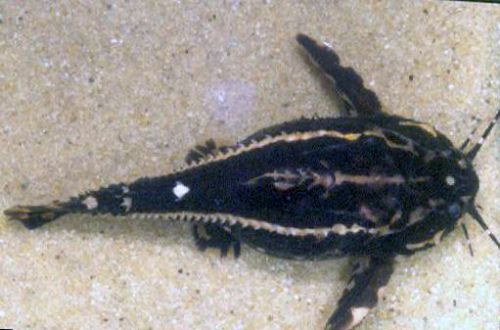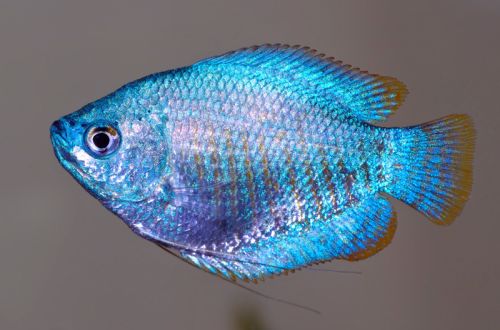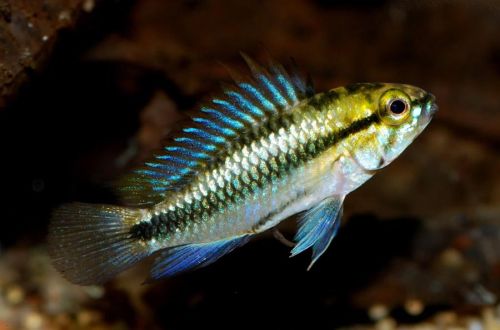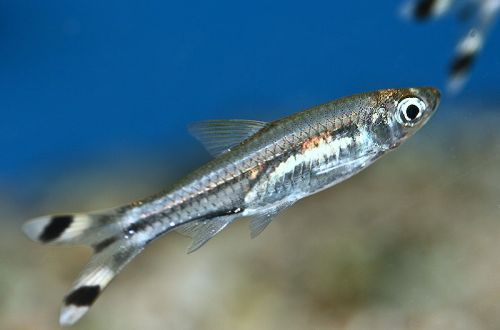
Spiny catfish
The spiny catfish, scientific name Acanthodoras spinosissimus, belongs to the family Doradidae (Armored Catfish). This family is also called “Talking catfish” because of the sounds they make, which they create with special bone plates. Easy to keep unpretentious fish. Makes a great addition to a freshwater aquarium.

Contents
Habitat
It originates from South America where it is widely distributed in the northern part of the Amazon basin in Peru, Colombia and Brazil, as well as in the Esexibo river basin in Guyana. Inhabits parts of rivers and streams with a slow flow, backwaters, floodplain lakes, freshwater marshes and coastal mangroves. In the daytime, catfish prefer among the roots or underwater vegetation, and at dusk they emerge from their shelters in search of food.
Brief information:
- The volume of the aquarium – from 100 liters.
- Temperature – 22-26°C
- Value pH — 6.0–7.5
- Water hardness – 4–24 dGH
- Substrate type – sandy
- Lighting – any
- Brackish water – allowed at a concentration of 1 teaspoon per liter of water
- Water movement – little or no
- The size of the fish is up to 14 cm.
- Food – any sinking food
- Temperament – peaceful
- Keeping in a group of 5-6 individuals
Description
Adults reach a length of no more than 14 cm. The catfish looks awkward because of its bulky body and comparatively short tail. The color is brown with light spots and stripes. The head and front of the body are covered with bone plates, and the tail is covered with sharp spines. The dorsal and pectoral fins have changed into sharp spikes. Actually, because of such features, he was nicknamed the Prickly Catfish.
Food
An omnivorous species, it will accept most sinking foods in dry and frozen form, as well as live brine shrimp, bloodworms, and daphnia. It feeds at night, so feeding should be done before the lights are turned off. If there is a lot of leftover food left in the aquarium during the day, then the portions should be reduced. Catfish will “eat up” for other fish.
Maintenance and care, arrangement of the aquarium
The optimal size of the aquarium for a group of 3-4 fish starts from 100 liters. In the design, it is necessary to provide for several shelters according to the number of catfish. They can be formed from snags and thickets of plants, or they can be decorative objects in the form of caves, grottoes. The substrate is soft, sandy. Since catfish will hide during the day, to observe their activity, they usually use an additional light source with a dull red spectrum, which is turned on after the main light is turned off.
Keeping fairly simple, the spiny catfish is able to adapt to a wide range of conditions, including brackish water. If you plan to change the hydrochemical composition of the water, for example, to add other fish, then this should be done very smoothly. Aquarium maintenance is standard. It requires regular removal of organic waste, cleaning of walls and design elements, weekly replacement of part of the water with fresh water, etc. Equally important is the placement of a productive filtration system and other necessary equipment.
It is worth remembering that when cleaning the aquarium, care must be taken, especially when catching catfish, their sharp spikes can prick.
Behavior and Compatibility
Not aggressive representatives of catfish, although due to their omnivorous nature they are able to eat fry or small fish that can fit in their mouth. Thanks to their “armor” and the ability to live in various water conditions, they can get along with many other types of fish, even with very cocky ones. They prefer to be in a group of at least 3-4 individuals.
Breeding / breeding
At the time of writing, there is little detailed information on successful breeding in home aquaria. With the onset of the mating season, the fish form temporary pairs, jointly prepare a place for future spawning (dig a hole in the ground) and take care of the laying until the fry appear.
Fish diseases
The cause of most diseases is unsuitable conditions of detention. A stable habitat will be the key to successful keeping. In the event of symptoms of the disease, first of all, the quality of the water should be checked and, if deviations are found, measures should be taken to correct the situation. If symptoms persist or even worsen, medical treatment will be required. Read more about symptoms and treatments in the Aquarium Fish Diseases section.





